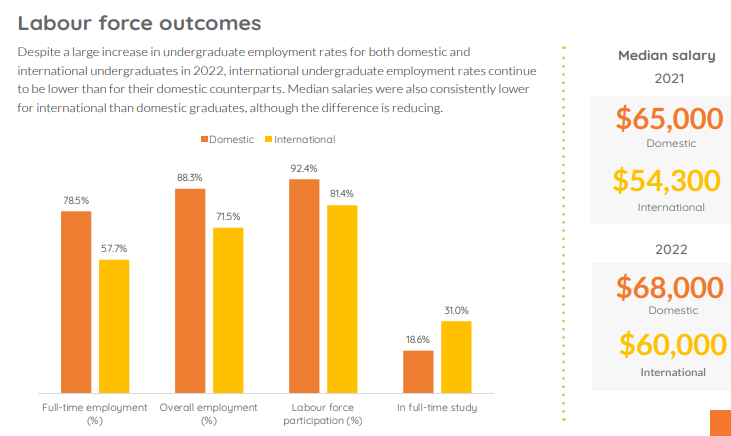By Stephen Saunders
Are our top universities lofty centres of independent research and scholarship, or engines and extensions of government policy departments? Climate (population) engineer ANU is both.
Indolent to a fault, I think little about mighty ANU, just a thirty-minute walk from our home in Canberra. But this summer’s Australia Day Awards and ANU Climate Update have set me off again.
ANU is, in effect, our only national or federal university. It’s a post-war creation story from titans like Ben Chifley, Bob Menzies, and Nugget Coombs.
The original 1946 aim was to “encourage, and provide facilities for, post-graduate [my emphasis] research and study, both generally and in relation to subjects of national importance”.
These days, their vision is “national unity and identity [my emphasis] …understanding ourselves and our neighbours”, then “research capacity” third.
Sure, they’ve done great stuff and changed Australia. But there’s a sting in the tail of the tale.
In the good old days, ANU was indeed a research mecca. Strolling around, you mostly encountered boffins. Relatively few actual students seemed to trouble the glades.
From 1980s origins, but accelerating in the early 2000s, Australia’s universities were hyped as a tiptop export industry.
It’s always been something of a furphy. But the concept appeals to Australia’s national insecurities. It’s easier than real export industries. The boondoggle has proved unstoppable.
If “national” ANU ever held back, later, they went boots and all. By the pandemic in 2021, ANU claimed 25,000 students, with international students being one-third. Plus, their local students were as elite as they come.
Vice-Chancellor (and fervent climate buff) Brian Schmidt’s campus was amidst an all-time student-accommodation construction boom. Then COVID barred his international tenants.
By the time Schmidt’s hand-picked successor, Genevieve Bell, took the reins this year, things had settled down. But, like other top (Go8) universities, ANU retains a vested interest in mass migration. More than half of which are international students.
Forget those genteel days of Colombo Plan students. Today’s incoming international student masses are touted as a the key source of Australia’s “skilled workers”.
That’s also misleading. Statistically, highly skilled (highly paid) migrants are only ever a minority of our net (or permanent) migration intakes. In particular, the student-migrant cohort has, on average, pretty mediocre employment and skill outcomes.

Source: Graduate Outcomes Survey (2022)
Our 21st century prime ministers, however, have always claimed the opposite. None more so than “migration nation” Albanese with his “global talent” crusade. And ANU has primed their narrative.
ANU’s 1995-2016 Demography chief Peter McDonald successfully spruiked Australia “converting” student and 457 visas into permanent visas. Big migration would also magically cure the (overrated) fiscal terrors of population ageing.
Meanwhile, ANU’s Glenn Withers was designing our “skilled” migration “points” system, an artifice that continues to hoodwink other nations.
In Labor’s December 2023 Migration Strategy, ANU was “commissioned” yet again, to help “reform” the points. Migrant Schmidt himself was paraded as an adorable “case study”.
“Skilled migrants” and “ageing population” are now embedded in popular culture, as central fibs of Huge Australia.
Reinforcing this constantly are McDonald’s celebrity proteges, ANU’s self-styled “Dr Demography” Liz Allen and “independent expert” Abul Rizvi. No wonder McDonald just got that big gong for “services” to demography and policy.
It’s not his personal fault if Albanese is topping Rudd’s 24-month migration extravaganza (560,000) by an eye-popping 60%. But was he entirely careful, I wonder, in what he wished for?
Did he consider the consequences for ordinary Australians? Plummeting productivity, falling household incomes and real wages, historic rental crisis, and world-class housing unaffordability.
Having delivered the goods on population, “national” ANU has found fresh international pastures.
Dating only from 2016-18, the United Nations conceit of “net zero emissions” by 2050 has quickly become the new black. For ANU and ALP alike.
To get with the program, ANU created a Climate Institute cutting across its seven Colleges. Net zero 2050 being insufficiently cloud cuckoo land, this phalanx urges net zero 2035.
Imagine my surprise to hear of them criticising Huge Australia. It turns out it’s a bit true.
The first half of the Institute Director’s 2024 Climate Update is the familiar tale of urgent woe. Record emissions, the hottest year on record, high temperatures everywhere, racing towards 1.5C global warming, and (ahem) “challenging” emissions “trajectories”.
In crass translation, 30 high-minded years of global “climate policy” isn’t working.
Yet, suddenly, the update turns on a dime. Claiming “very large” potential to cut emissions at “very low” costs. Hurrah, those “challenging” trajectories can still bend it like Beckham. Maybe sometime around 2045 and a half?
The rest of it is curious stuff. The latest global climate love-in (COP 28) both succeeded and failed – take your pick. Australian “climate policy” both succeeds and fails – take your pick.
Right at the death: “Massive population increase post-COVID makes emission-reduction harder”. If so, how come nothing on ANU’s climate “mitigation” or “adaptation” shopping-list is about population?
Talk about putting the first thing last. ANU, I fear, will continue to ride Labor’s population and net-zero bandwagons simultaneously, setting aside the obvious contradictions.
So, don’t hold your breath for an annual ANU “Population Update” marquee. Flush with Fenner School or other evidence on the environmental costs of Huge Australia and the punishing effects for citizens.
Just like any other “stakeholder” of Huge Australia, ANU and other top universities want to protect their seats at the top government table. Also, their international trade.
Their corporate focus is globalised – they need the hubris (the essential revenues) of their international campuses and international student-migrant throngs.
Even if this works against the quality of the degrees and opportunities available to the locals. Not to mention “national unity”.

